- Joined
- Jan 6, 2013
- Messages
- 5,574
- Reaction score
- 11,213
1. The History
The former Air Ministry bomb store is located near the village of Llanberis, Gwynedd, North Wales. In August 1939, just prior to the start of World War 2, approval was sought to convert the former Glynrhonwy Isaf slate quarry into a 18,000-ton capacity bomb store. The quarry, which had previously closed in 1930, consisted of a number of deep, open pits linked together by tunnels. The air ministry planned to convert the eastern pit of the mine using the same technique used previously at Harpur Hill in Derbyshire.
On approval, the quarry was adapted to provide storage over two floors using eight 24-feet wide, 200-feet long galleries. The lower level galleries were identified by the letters A to H and J to S on the upper floor. These, in turn, were divided in eleven bays, indicated by a red roundel painted on the wall, midway between the numbers. The lower floor had a reinforced concrete ceiling, supported by concrete pillars, 12 feet apart, running down the centre, supporting a concrete beam running the length of each gallery. This in turn formed the floor of the upper level with its eight arched roof galleries, with no supporting pillars. The doorways on the ground were square while on the upper floor the doorways were slightly smaller and arched. Three electric lifts were installed so the bombs could be transported between floors. Two lifts connected gallery C and M, one at arch 6 (now next to a brick wall build after the collapse, rendering it of little use) and the other at arch 9. The third lift was in the collapsed section. A single staircase connects the lower and upper levels at C11.
In terms of access to the store, there were three tunnels into the bomb-store. The main access tunnel was part-square/part-arched and 15-feet wide. The quarry’s northern tunnel was adapted to take a standard gauge railway line during the construction of the depot. This ran into the wider, sunken area between gallery B and gallery C, allowing the floor of the depot to act as a loading platform, either side of the line. The smaller 7-feet high southern access tunnel of unlined rock originally took a narrow-gauge tramway into the eastern pit and came into the store at the back of gallery D.
Map of the store:
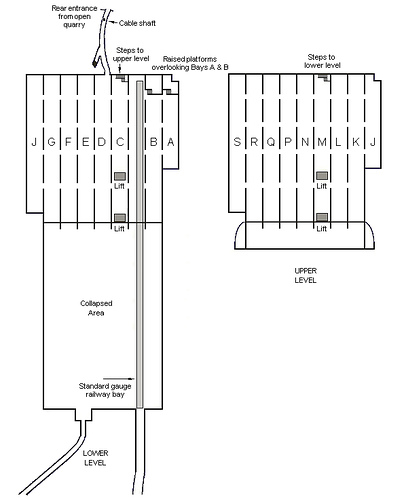 Llanberis map by HughieDW, on Flickr
Llanberis map by HughieDW, on Flickr
Disaster struck just six months after the store’s completion. On 25th January 1942, with corners having been cut financial during the store’s construction, two-thirds of the store (including bays 1-5) collapsed under the weight of the overlaying backfill. The collapse buried 14,000 tons of bombs (at the time, 14% of the RAF’s total stock!) including a 27-wagon train that was in the process of being unloading. This explains why of the surviving tunnel’s bays run from 6 to 11 on both upper and lower levels. The ensuing inquiry concluded the collapse was due to design faults and a subsequent failure to act when cracks appeared, just prior to the store’s completion.
Bomb recovery post the collapse and an old aerial map explaining the site layout
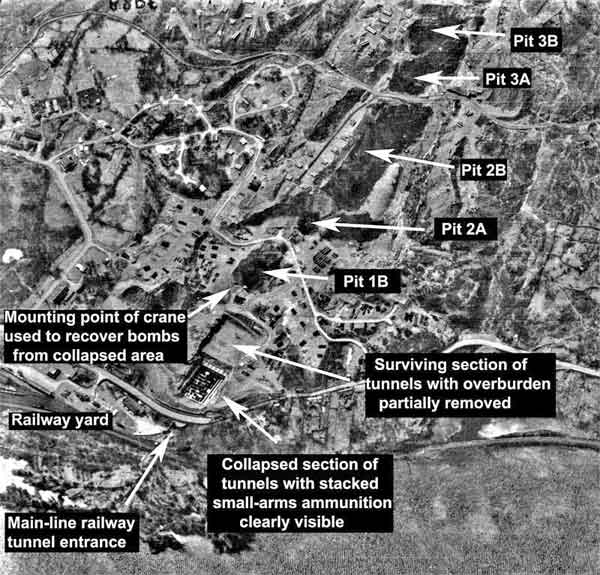 llanberisaerial by HughieDW, on Flickr
llanberisaerial by HughieDW, on Flickr
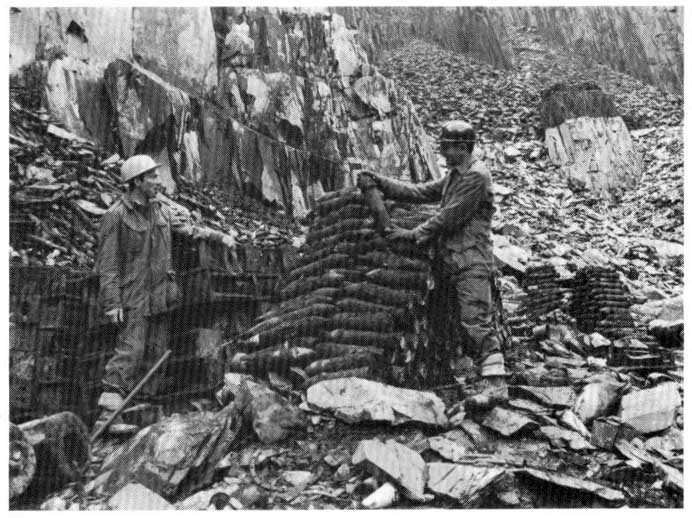 Llanberis clearance by HughieDW, on Flickr
Llanberis clearance by HughieDW, on Flickr
Although the majority of the bombs were recovered and the remaining tunnels cleared of debris, ammunition was not stored underground here subsequent to the collapse. The surviving parts of the eight parallel underground galleries were initially bricked off and abandoned. However, the now-cleared collapsed section, measuring approximately 60m by 100m (and 12m deep) and referred to as ‘the tank’ was used for open storage of incendiaries from June 1943 when the Royal Air Force School of Explosives moved into the site. The school use of the quarry area for the demolition and burning of explosives continued until after the war with their destruction programme including just about every type of bomb in the RAF’s arsenal. When their programme finished in March 1955, all stock was removed, and the depot officially closed three months later in July 1956.
Despite leaving the site, the school’s legacy lived on, for the wrong reasons. Not all of the ordinance was completely destroyed, leaving parts of the quarry complex containing significant quantities of un-exploded items. When tossed into the quarry pits, many bombs failed to reach the quarry bottom, instead landing on ledges. Others ended up at the bottom of lakes where parts of the quarry had flooded. This led to a decision in 1969 to clear the entire site of explosives. The task was handed to RAF Bicester’s 71 Maintenance Unit EOD Flight in October 1975. This was no mean task with the unit having to learn how to lift tons of explosives from the quarry pits and lakes using special mechanical equipment. Hence, they very quickly acquired the skills of tunnelling and rock climbing as, initially, these were the only ways of gaining access to some of the pits and their surrounding ledges.
This was one of few bomb disposal tasks carried out by any of the service where members of the unit were instructed by a Mountain Rescue Team. Over the space of six years EOD Flight, with logistical help from the Royal Engineers and Royal Navy divers in the lakes, recovered tons of incendiary and high explosive bomb. The divers had earlier confirmed that one large lake was littered with explosive items including a number of large bombs. Hence 200-million gallons of water and sludge were pumped out and when finally drained in April 1973, it took a further two years to recover and dispose of the freshly revealed-ordinance.
By the end of their assignment EOD Flight had removed 85,000 tons of slate and debris and recovered and disposed no less than 352 tons of explosives items.
2. The Explore
I know this place has been done to death over the years but give it is a pretty unique place with and interesting (if not slightly disastrous) history I thought I’d give it a look. After the 40-or-so minute drive from where we were staying, I arrived at the place with no access info. I parked up south of the store and walked over what looked like to be a former carpark. I soon arrived at the rim of the tank and headed to the eastern corner where it was a scramble down a slate bank on the lower level. Fortunately, the only door in was unlocked and I had the place to myself. The main issue was that I’d left the battery charger at home for one torch and my Lenser had got switched on over-night in my bag. Not great in totally pitch-black tunnels. Step forward the torch on my phone. And although it took a bit longer, fortunately I still managed to get enough decent-ish pictures of the interior. So, an enjoyable was to spend a couple of hours of my time and still worth the visit if you are in the area.
3. The Photographs
First view of the tank:
 Llanberis 13 by HughieDW, on Flickr
Llanberis 13 by HughieDW, on Flickr
And we’re down:
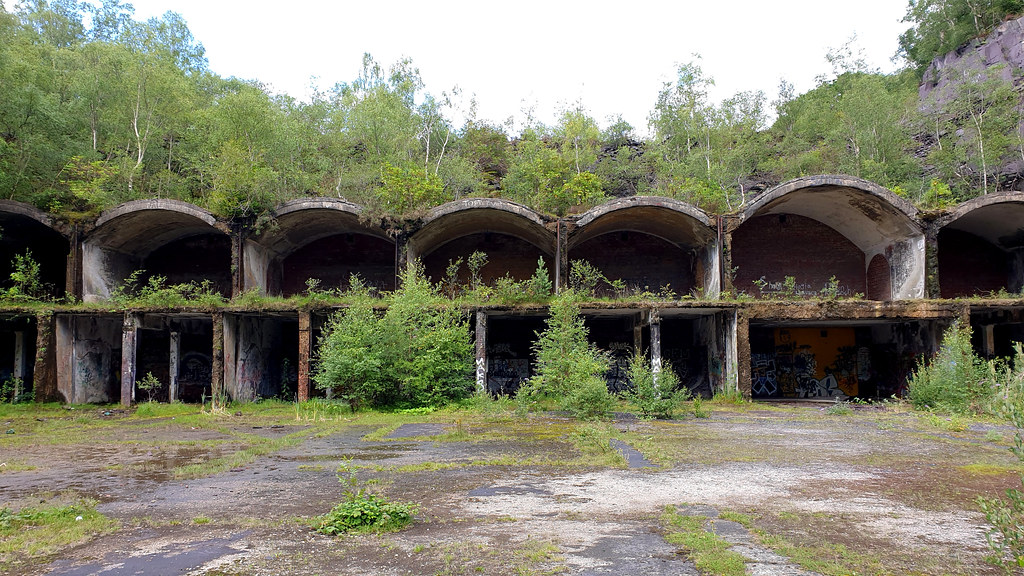 Llanberis 10 by HughieDW, on Flickr
Llanberis 10 by HughieDW, on Flickr
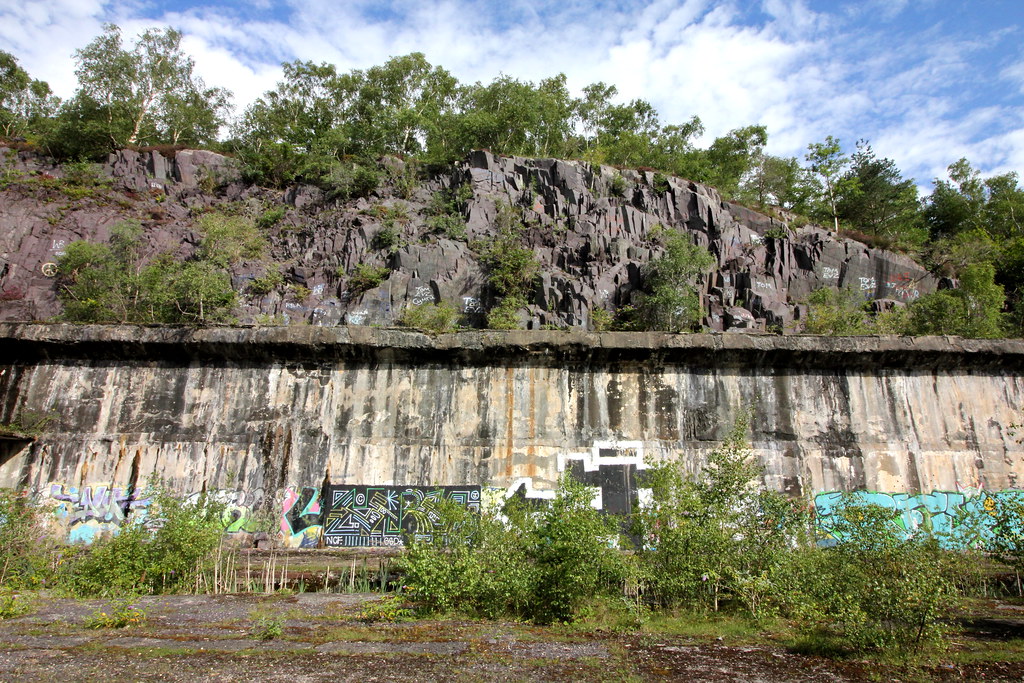 img7627 by HughieDW, on Flickr
img7627 by HughieDW, on Flickr
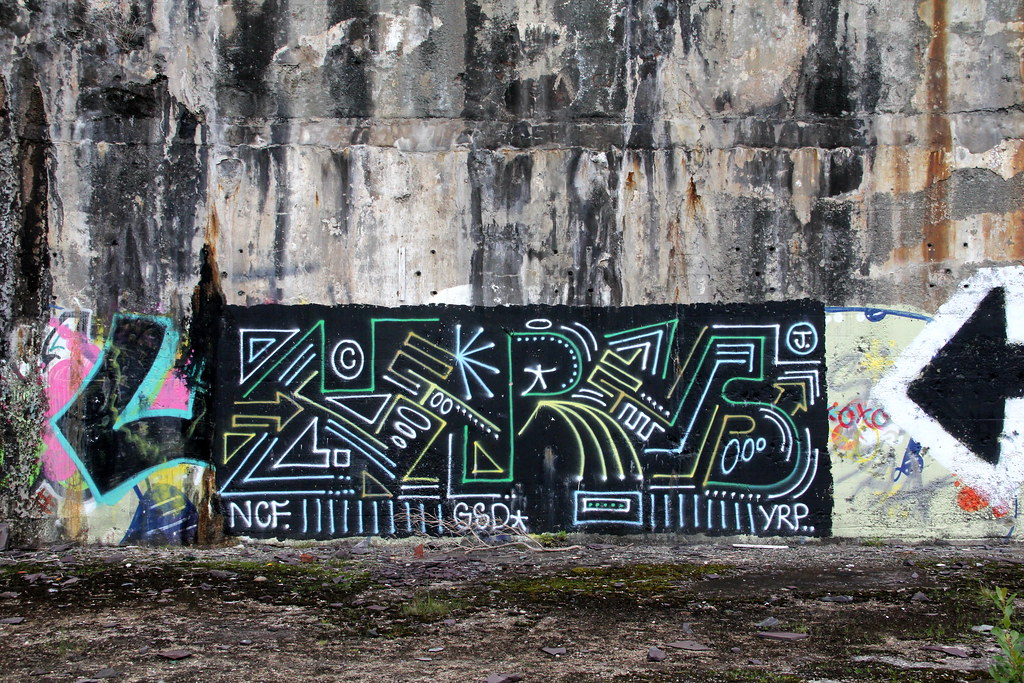 img7564 by HughieDW, on Flickr
img7564 by HughieDW, on Flickr
The gated main entrance:
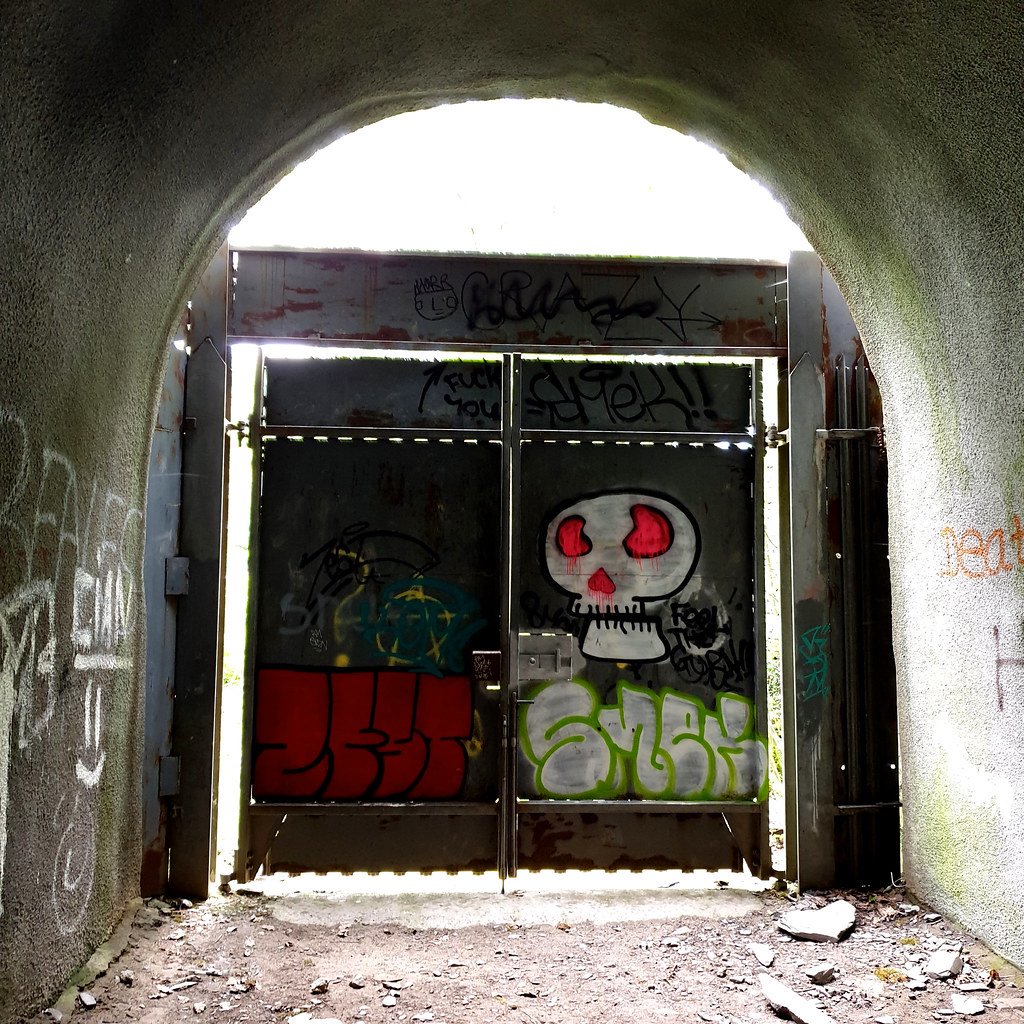 Llanberis 09 by HughieDW, on Flickr
Llanberis 09 by HughieDW, on Flickr
And the standard gauge railway tunnel:
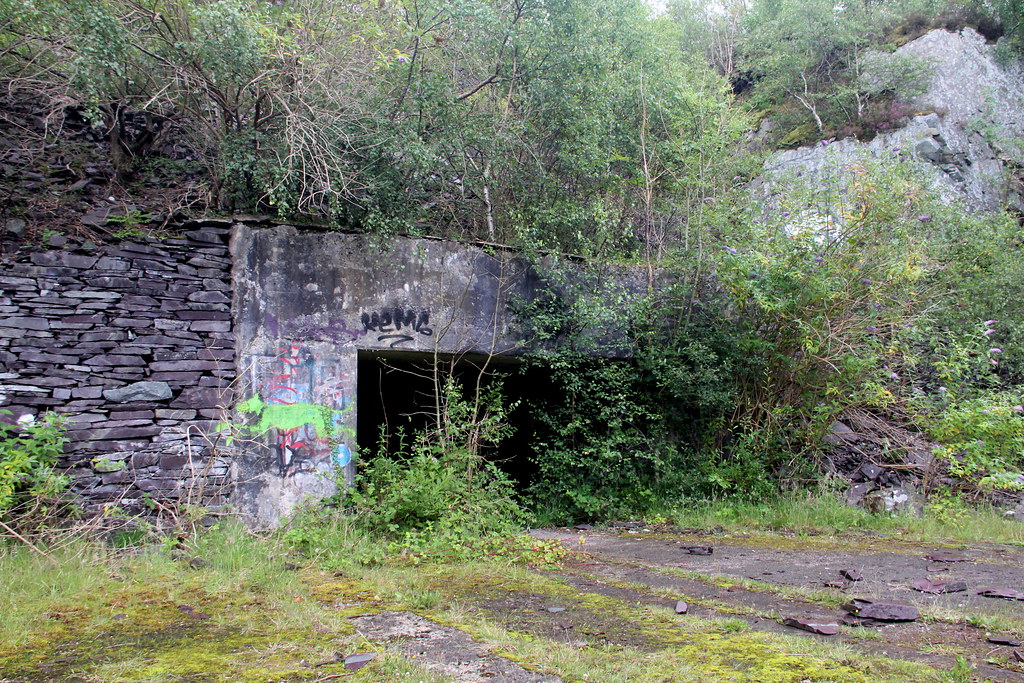 img7592 by HughieDW, on Flickr
img7592 by HughieDW, on Flickr
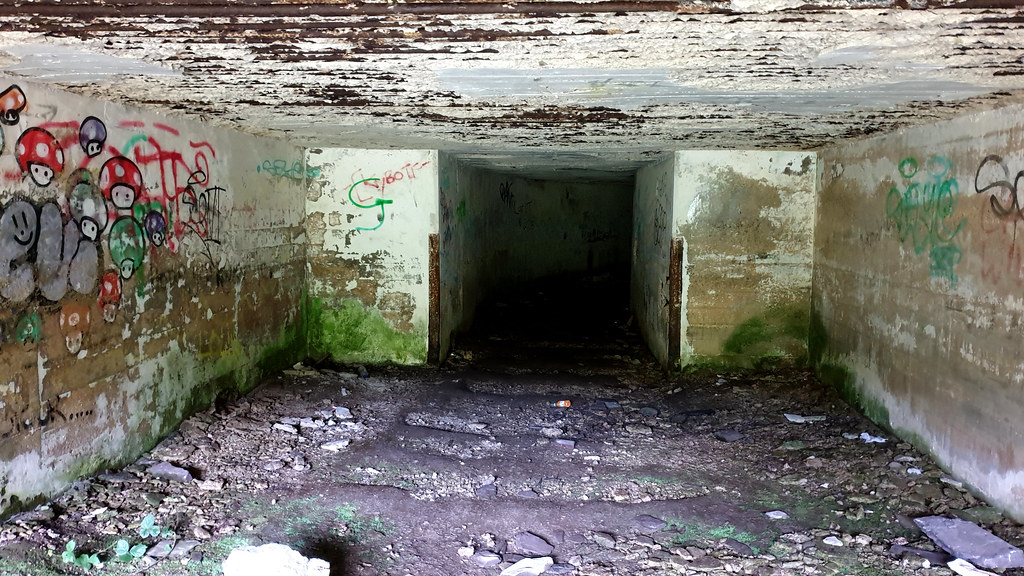 Llanberis 07 by HughieDW, on Flickr
Llanberis 07 by HughieDW, on Flickr
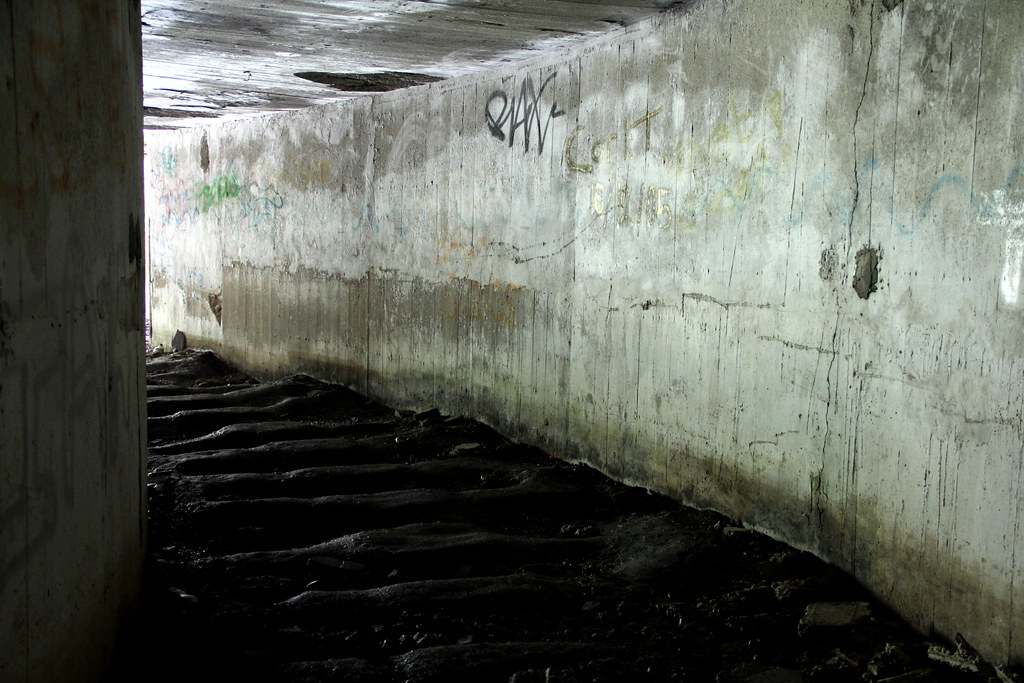 img7594 by HughieDW, on Flickr
img7594 by HughieDW, on Flickr
So on to the remaining underground section:
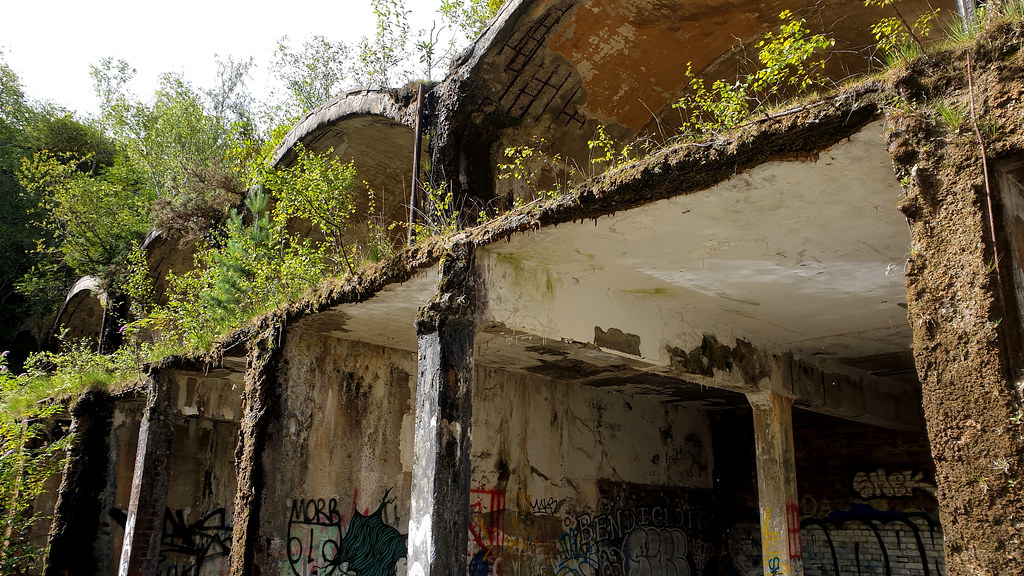 Llanberis 11 by HughieDW, on Flickr
Llanberis 11 by HughieDW, on Flickr
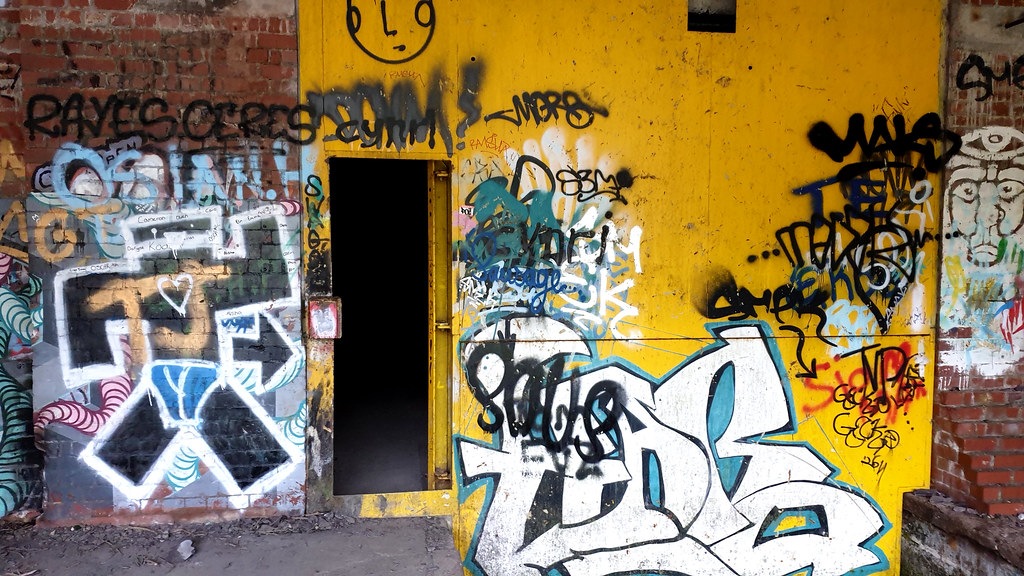 Llanberis 04 by HughieDW, on Flickr
Llanberis 04 by HughieDW, on Flickr
Looking out across the tank:
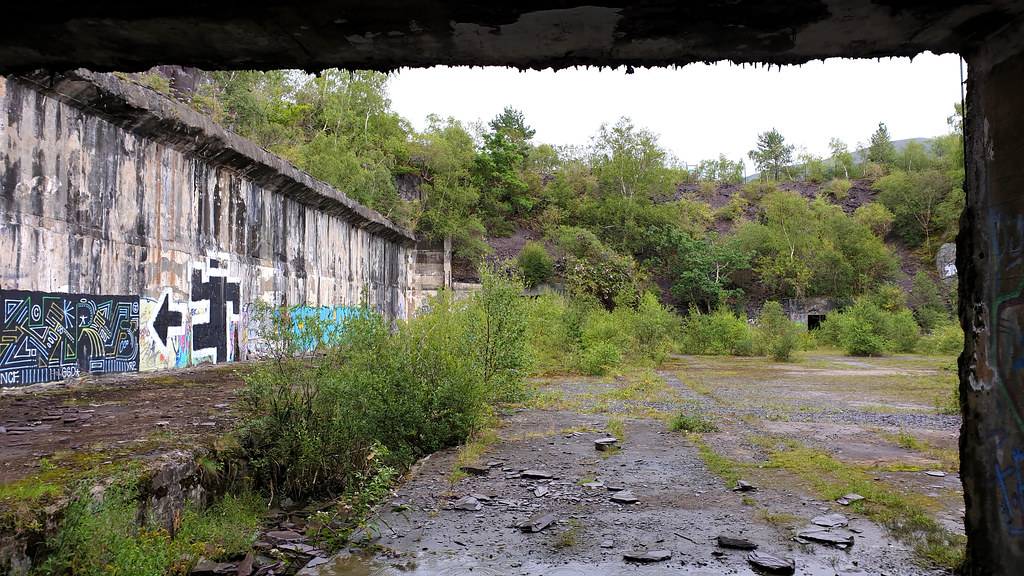 Llanberis 03 by HughieDW, on Flickr
Llanberis 03 by HughieDW, on Flickr
Square doorways on the ground floor:
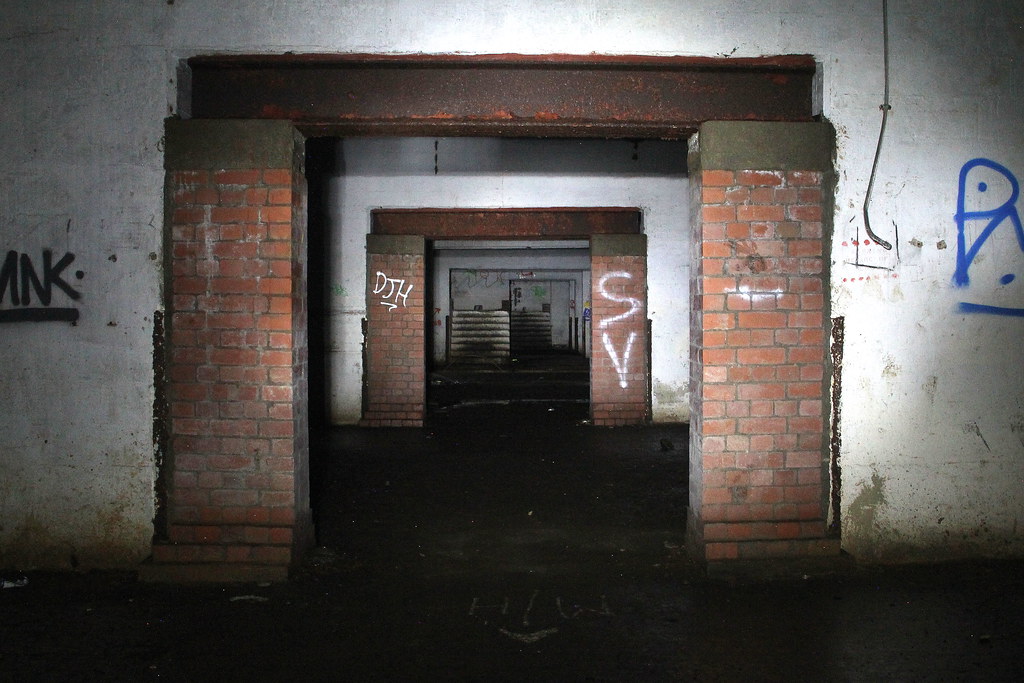 img7573 by HughieDW, on Flickr
img7573 by HughieDW, on Flickr
The ground floor concrete support pillars for the ceiling:
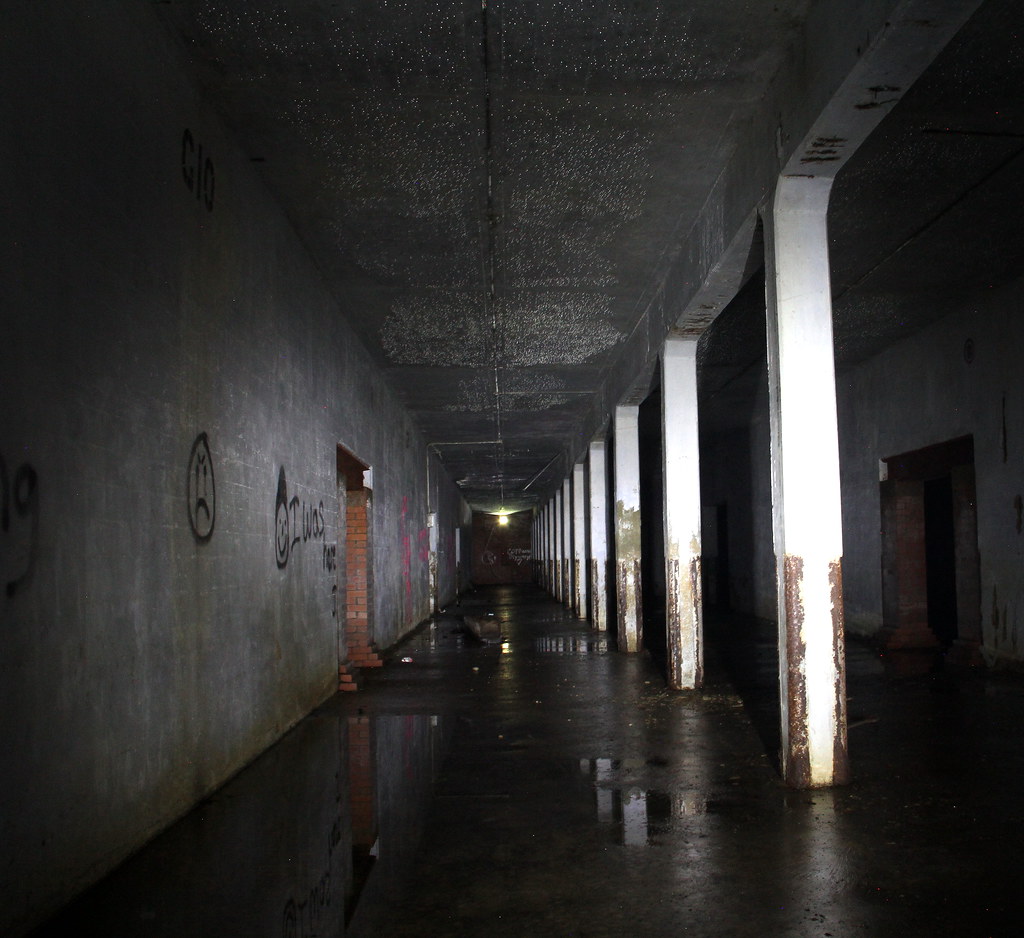 img7568 by HughieDW, on Flickr
img7568 by HughieDW, on Flickr
Some half decent graff:
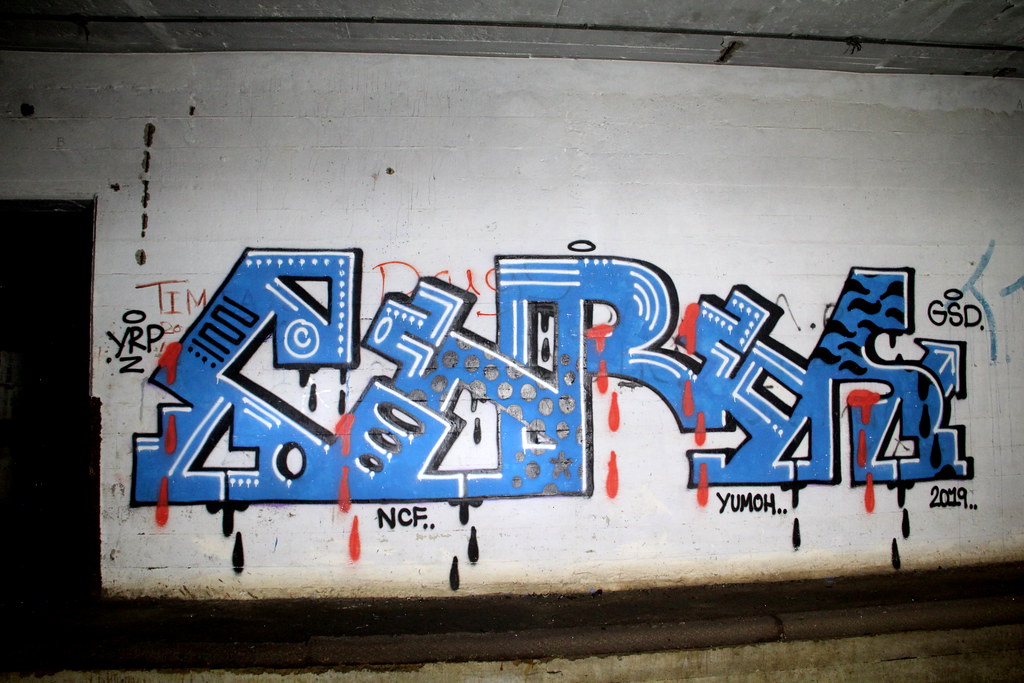 img7575 by HughieDW, on Flickr
img7575 by HughieDW, on Flickr
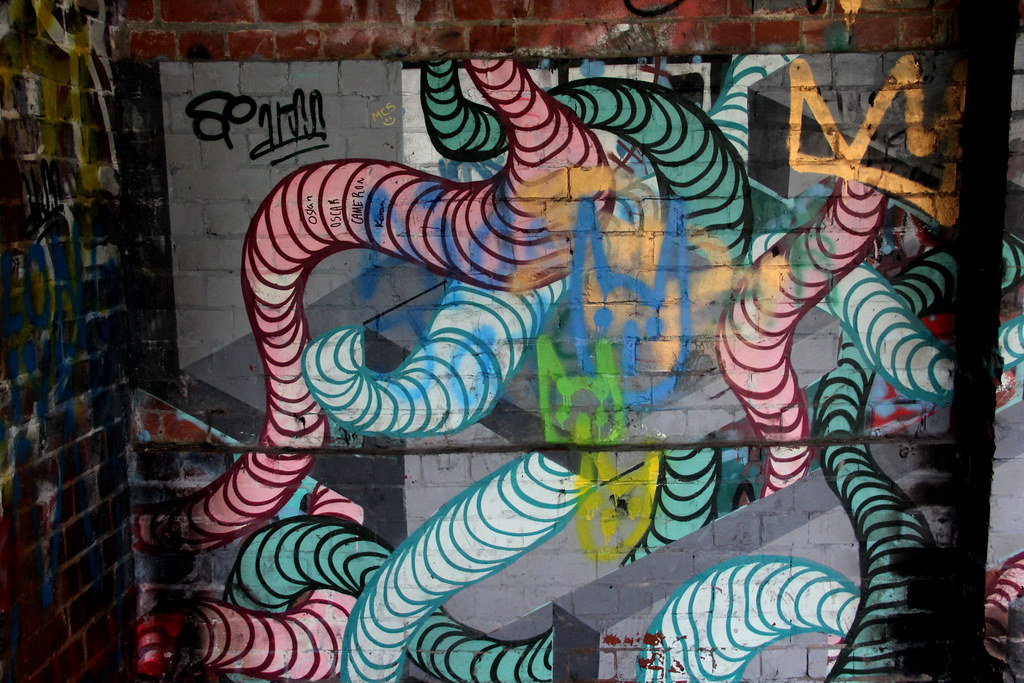 img7567 by HughieDW, on Flickr
img7567 by HughieDW, on Flickr
The southern tunnel is locked but still ‘accessible’. Call me a chicken, but I didn’t really fancy it:
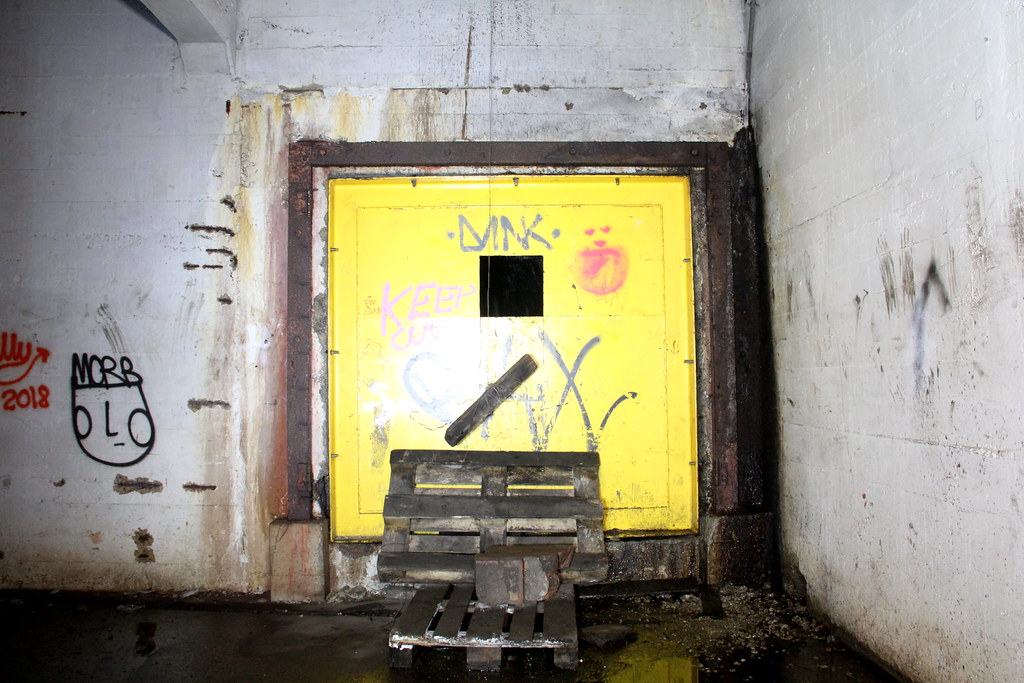 img7574 by HughieDW, on Flickr
img7574 by HughieDW, on Flickr
Up onto the upper floor via the staircase at C11:
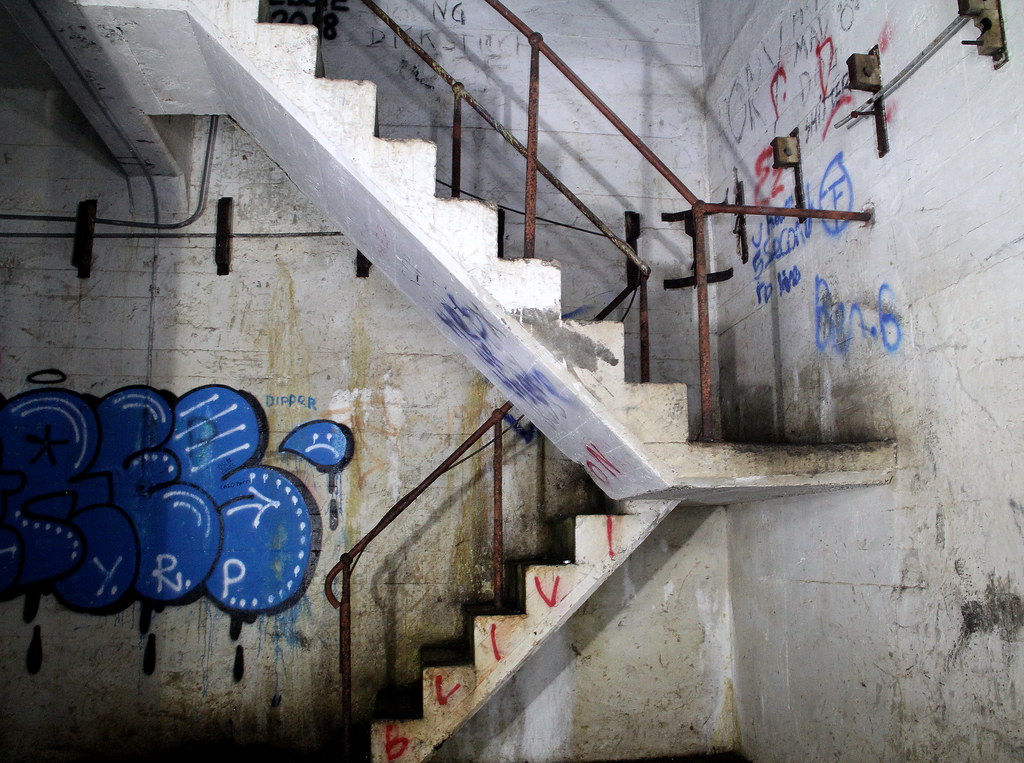 img7576 by HughieDW, on Flickr
img7576 by HughieDW, on Flickr
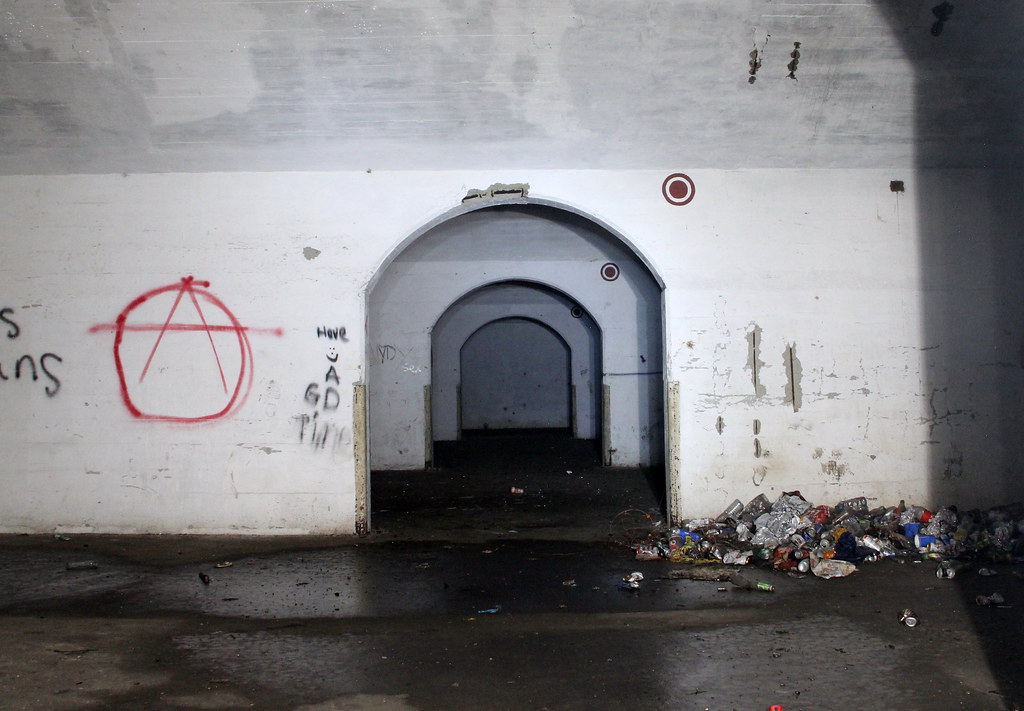 img7579 by HughieDW, on Flickr
img7579 by HughieDW, on Flickr
Loving the curved doorways:
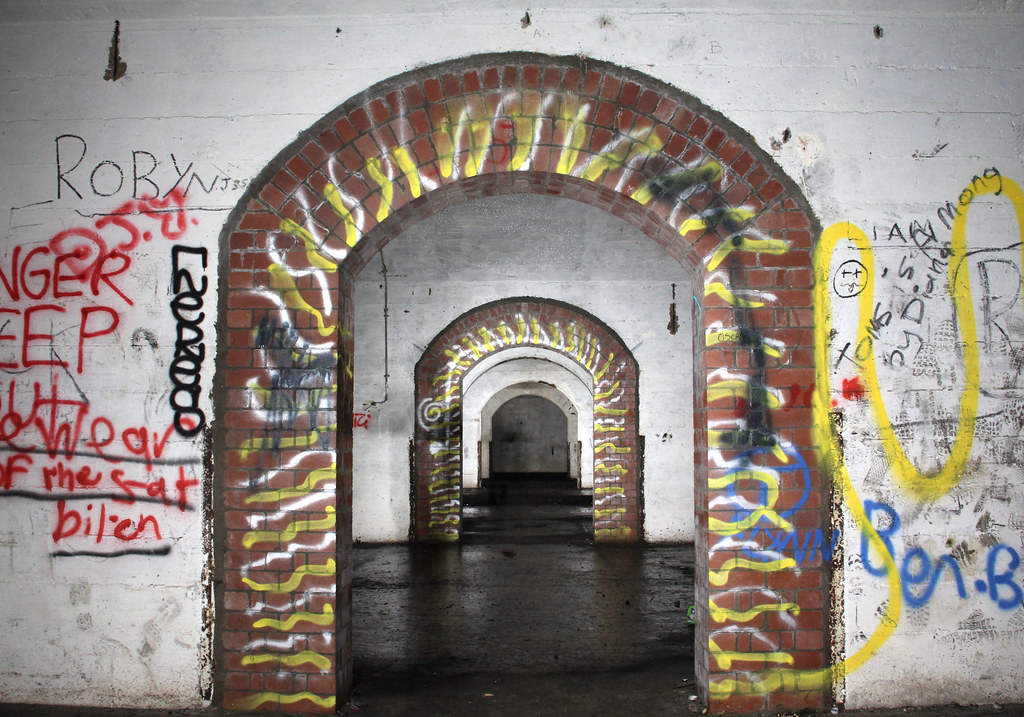 img7618 by HughieDW, on Flickr
img7618 by HughieDW, on Flickr
The lift on gallery M at M9:
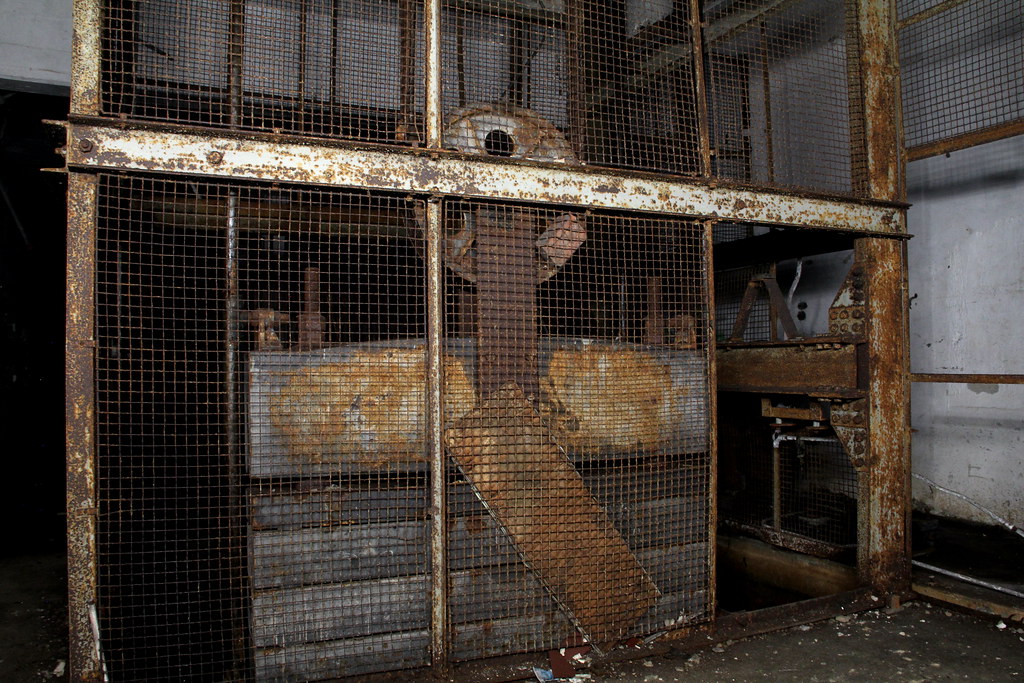 img7608 by HughieDW, on Flickr
img7608 by HughieDW, on Flickr
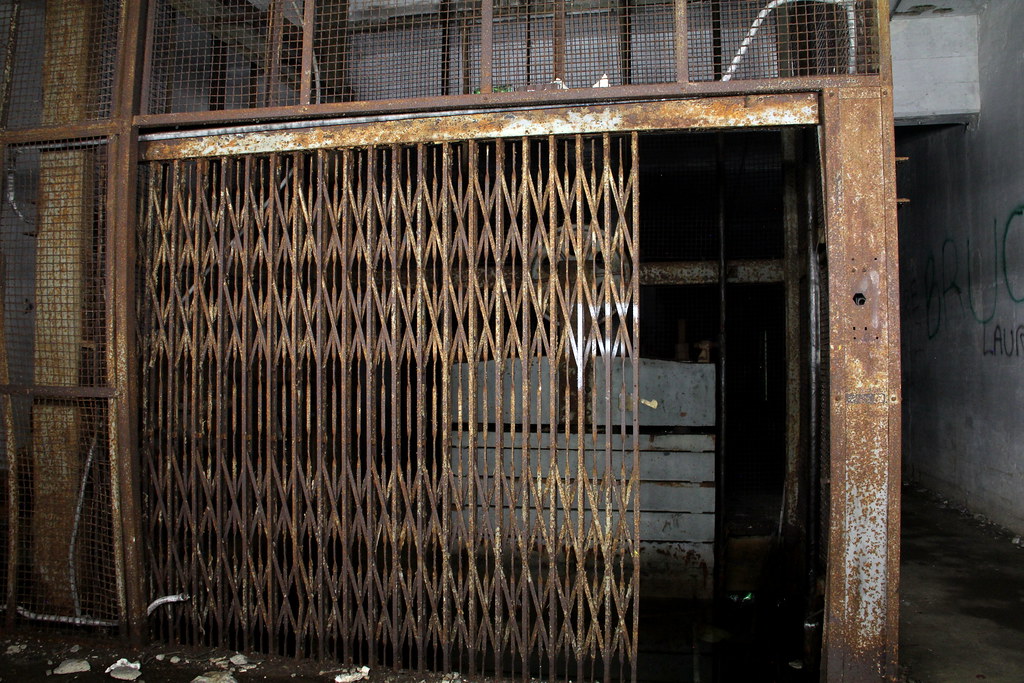 img7607 by HughieDW, on Flickr
img7607 by HughieDW, on Flickr
And the lift at M6 (note brick retaining wall):
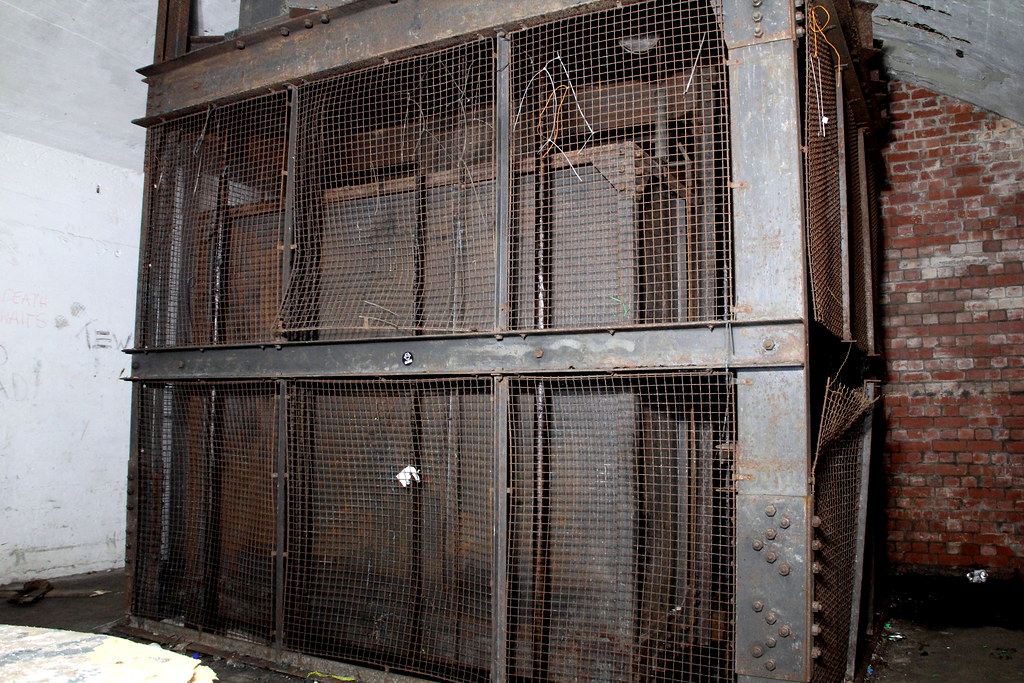 img7580 by HughieDW, on Flickr
img7580 by HughieDW, on Flickr
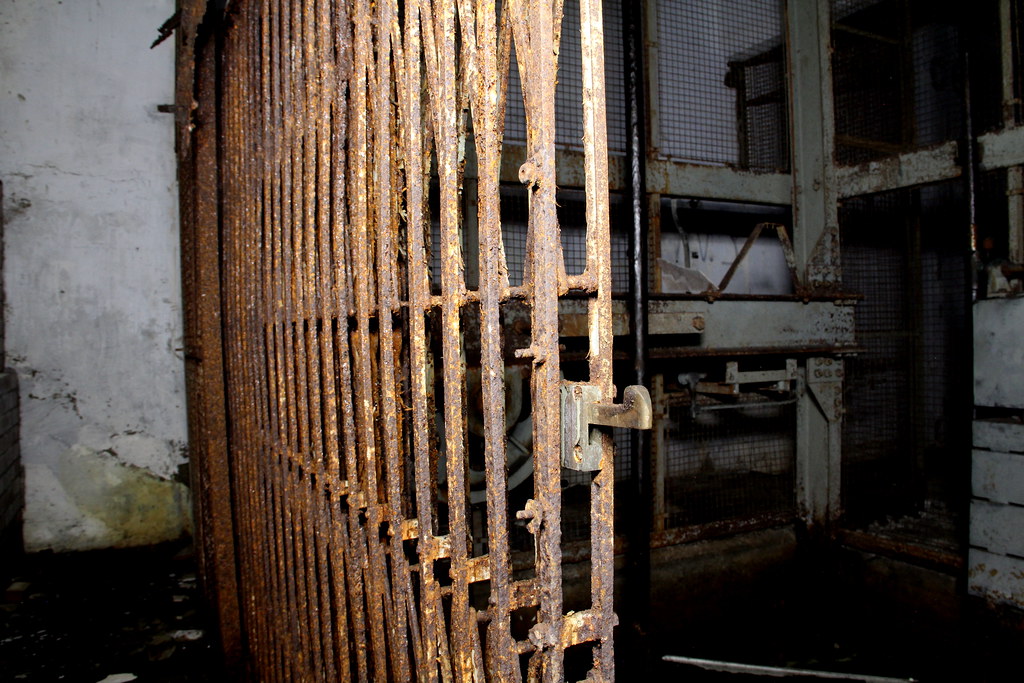 img7606 by HughieDW, on Flickr
img7606 by HughieDW, on Flickr
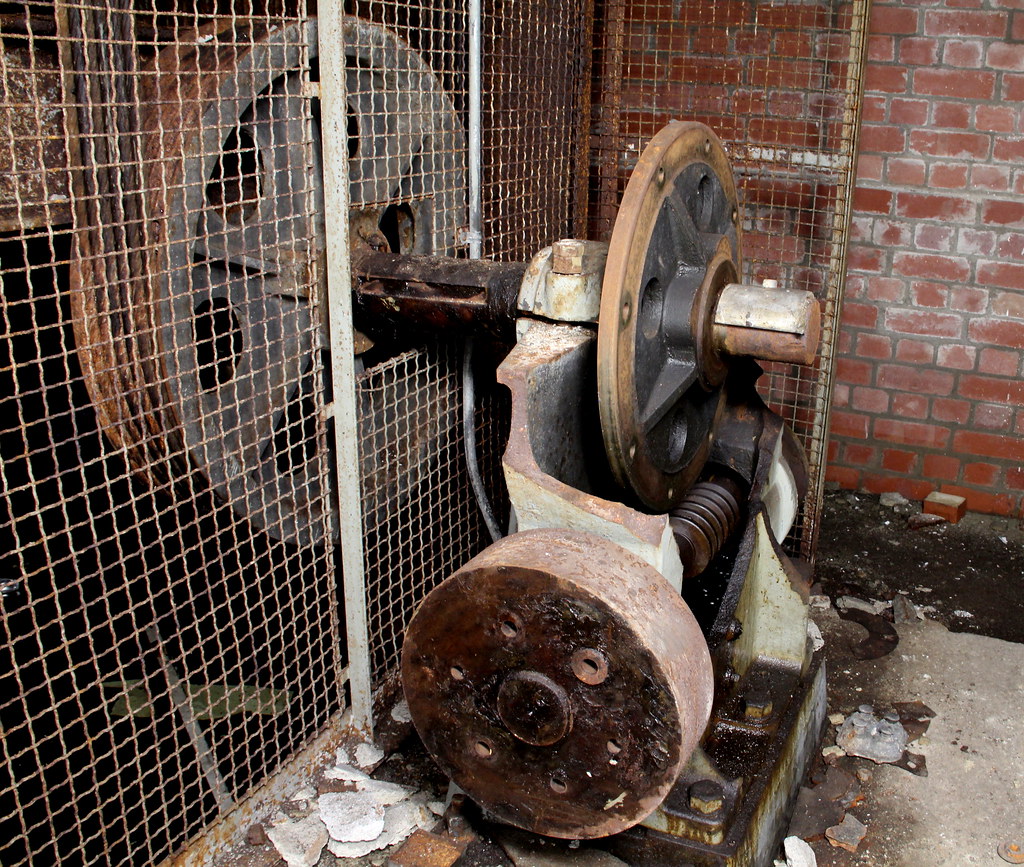 img7602 by HughieDW, on Flickr
img7602 by HughieDW, on Flickr
The relatively ‘clean’ R gallery at R10:
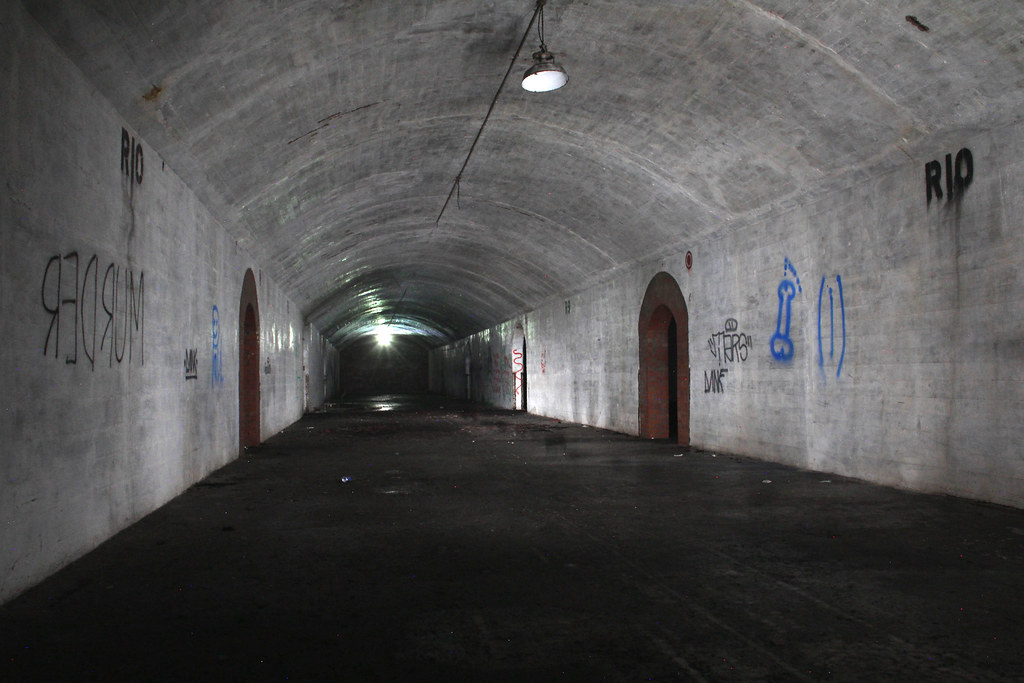 img7621 by HughieDW, on Flickr
img7621 by HughieDW, on Flickr
And the far corner of the upper floor at R11:
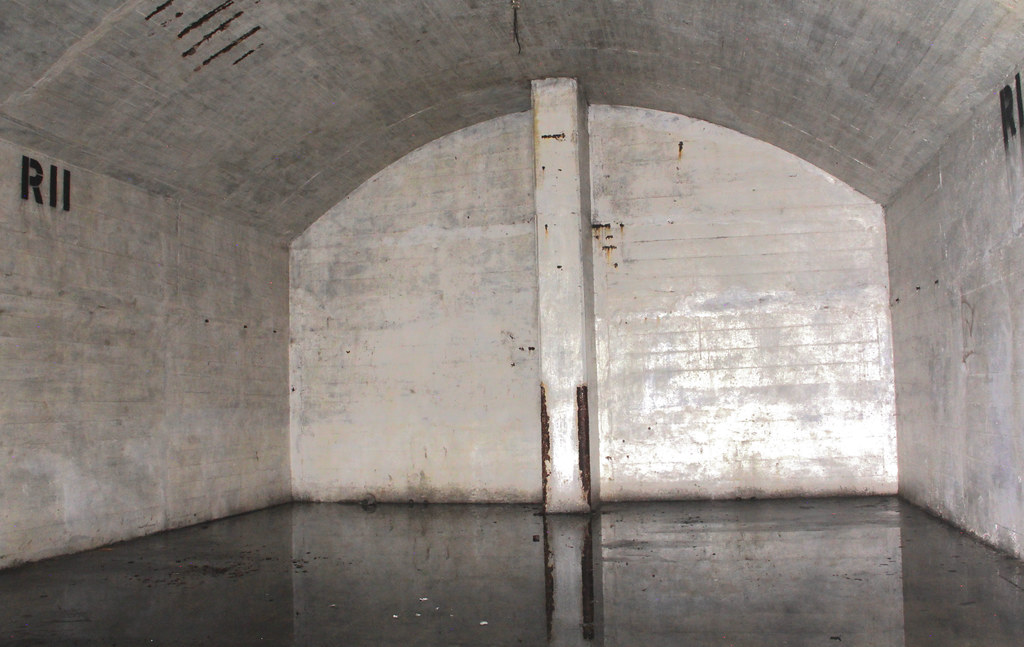 img7620 by HughieDW, on Flickr
img7620 by HughieDW, on Flickr
The former Air Ministry bomb store is located near the village of Llanberis, Gwynedd, North Wales. In August 1939, just prior to the start of World War 2, approval was sought to convert the former Glynrhonwy Isaf slate quarry into a 18,000-ton capacity bomb store. The quarry, which had previously closed in 1930, consisted of a number of deep, open pits linked together by tunnels. The air ministry planned to convert the eastern pit of the mine using the same technique used previously at Harpur Hill in Derbyshire.
On approval, the quarry was adapted to provide storage over two floors using eight 24-feet wide, 200-feet long galleries. The lower level galleries were identified by the letters A to H and J to S on the upper floor. These, in turn, were divided in eleven bays, indicated by a red roundel painted on the wall, midway between the numbers. The lower floor had a reinforced concrete ceiling, supported by concrete pillars, 12 feet apart, running down the centre, supporting a concrete beam running the length of each gallery. This in turn formed the floor of the upper level with its eight arched roof galleries, with no supporting pillars. The doorways on the ground were square while on the upper floor the doorways were slightly smaller and arched. Three electric lifts were installed so the bombs could be transported between floors. Two lifts connected gallery C and M, one at arch 6 (now next to a brick wall build after the collapse, rendering it of little use) and the other at arch 9. The third lift was in the collapsed section. A single staircase connects the lower and upper levels at C11.
In terms of access to the store, there were three tunnels into the bomb-store. The main access tunnel was part-square/part-arched and 15-feet wide. The quarry’s northern tunnel was adapted to take a standard gauge railway line during the construction of the depot. This ran into the wider, sunken area between gallery B and gallery C, allowing the floor of the depot to act as a loading platform, either side of the line. The smaller 7-feet high southern access tunnel of unlined rock originally took a narrow-gauge tramway into the eastern pit and came into the store at the back of gallery D.
Map of the store:
 Llanberis map by HughieDW, on Flickr
Llanberis map by HughieDW, on FlickrDisaster struck just six months after the store’s completion. On 25th January 1942, with corners having been cut financial during the store’s construction, two-thirds of the store (including bays 1-5) collapsed under the weight of the overlaying backfill. The collapse buried 14,000 tons of bombs (at the time, 14% of the RAF’s total stock!) including a 27-wagon train that was in the process of being unloading. This explains why of the surviving tunnel’s bays run from 6 to 11 on both upper and lower levels. The ensuing inquiry concluded the collapse was due to design faults and a subsequent failure to act when cracks appeared, just prior to the store’s completion.
Bomb recovery post the collapse and an old aerial map explaining the site layout
 llanberisaerial by HughieDW, on Flickr
llanberisaerial by HughieDW, on Flickr Llanberis clearance by HughieDW, on Flickr
Llanberis clearance by HughieDW, on FlickrAlthough the majority of the bombs were recovered and the remaining tunnels cleared of debris, ammunition was not stored underground here subsequent to the collapse. The surviving parts of the eight parallel underground galleries were initially bricked off and abandoned. However, the now-cleared collapsed section, measuring approximately 60m by 100m (and 12m deep) and referred to as ‘the tank’ was used for open storage of incendiaries from June 1943 when the Royal Air Force School of Explosives moved into the site. The school use of the quarry area for the demolition and burning of explosives continued until after the war with their destruction programme including just about every type of bomb in the RAF’s arsenal. When their programme finished in March 1955, all stock was removed, and the depot officially closed three months later in July 1956.
Despite leaving the site, the school’s legacy lived on, for the wrong reasons. Not all of the ordinance was completely destroyed, leaving parts of the quarry complex containing significant quantities of un-exploded items. When tossed into the quarry pits, many bombs failed to reach the quarry bottom, instead landing on ledges. Others ended up at the bottom of lakes where parts of the quarry had flooded. This led to a decision in 1969 to clear the entire site of explosives. The task was handed to RAF Bicester’s 71 Maintenance Unit EOD Flight in October 1975. This was no mean task with the unit having to learn how to lift tons of explosives from the quarry pits and lakes using special mechanical equipment. Hence, they very quickly acquired the skills of tunnelling and rock climbing as, initially, these were the only ways of gaining access to some of the pits and their surrounding ledges.
This was one of few bomb disposal tasks carried out by any of the service where members of the unit were instructed by a Mountain Rescue Team. Over the space of six years EOD Flight, with logistical help from the Royal Engineers and Royal Navy divers in the lakes, recovered tons of incendiary and high explosive bomb. The divers had earlier confirmed that one large lake was littered with explosive items including a number of large bombs. Hence 200-million gallons of water and sludge were pumped out and when finally drained in April 1973, it took a further two years to recover and dispose of the freshly revealed-ordinance.
By the end of their assignment EOD Flight had removed 85,000 tons of slate and debris and recovered and disposed no less than 352 tons of explosives items.
2. The Explore
I know this place has been done to death over the years but give it is a pretty unique place with and interesting (if not slightly disastrous) history I thought I’d give it a look. After the 40-or-so minute drive from where we were staying, I arrived at the place with no access info. I parked up south of the store and walked over what looked like to be a former carpark. I soon arrived at the rim of the tank and headed to the eastern corner where it was a scramble down a slate bank on the lower level. Fortunately, the only door in was unlocked and I had the place to myself. The main issue was that I’d left the battery charger at home for one torch and my Lenser had got switched on over-night in my bag. Not great in totally pitch-black tunnels. Step forward the torch on my phone. And although it took a bit longer, fortunately I still managed to get enough decent-ish pictures of the interior. So, an enjoyable was to spend a couple of hours of my time and still worth the visit if you are in the area.
3. The Photographs
First view of the tank:
 Llanberis 13 by HughieDW, on Flickr
Llanberis 13 by HughieDW, on FlickrAnd we’re down:
 Llanberis 10 by HughieDW, on Flickr
Llanberis 10 by HughieDW, on Flickr img7627 by HughieDW, on Flickr
img7627 by HughieDW, on Flickr img7564 by HughieDW, on Flickr
img7564 by HughieDW, on FlickrThe gated main entrance:
 Llanberis 09 by HughieDW, on Flickr
Llanberis 09 by HughieDW, on FlickrAnd the standard gauge railway tunnel:
 img7592 by HughieDW, on Flickr
img7592 by HughieDW, on Flickr Llanberis 07 by HughieDW, on Flickr
Llanberis 07 by HughieDW, on Flickr img7594 by HughieDW, on Flickr
img7594 by HughieDW, on FlickrSo on to the remaining underground section:
 Llanberis 11 by HughieDW, on Flickr
Llanberis 11 by HughieDW, on Flickr Llanberis 04 by HughieDW, on Flickr
Llanberis 04 by HughieDW, on FlickrLooking out across the tank:
 Llanberis 03 by HughieDW, on Flickr
Llanberis 03 by HughieDW, on FlickrSquare doorways on the ground floor:
 img7573 by HughieDW, on Flickr
img7573 by HughieDW, on FlickrThe ground floor concrete support pillars for the ceiling:
 img7568 by HughieDW, on Flickr
img7568 by HughieDW, on FlickrSome half decent graff:
 img7575 by HughieDW, on Flickr
img7575 by HughieDW, on Flickr img7567 by HughieDW, on Flickr
img7567 by HughieDW, on FlickrThe southern tunnel is locked but still ‘accessible’. Call me a chicken, but I didn’t really fancy it:
 img7574 by HughieDW, on Flickr
img7574 by HughieDW, on FlickrUp onto the upper floor via the staircase at C11:
 img7576 by HughieDW, on Flickr
img7576 by HughieDW, on Flickr img7579 by HughieDW, on Flickr
img7579 by HughieDW, on FlickrLoving the curved doorways:
 img7618 by HughieDW, on Flickr
img7618 by HughieDW, on FlickrThe lift on gallery M at M9:
 img7608 by HughieDW, on Flickr
img7608 by HughieDW, on Flickr img7607 by HughieDW, on Flickr
img7607 by HughieDW, on FlickrAnd the lift at M6 (note brick retaining wall):
 img7580 by HughieDW, on Flickr
img7580 by HughieDW, on Flickr img7606 by HughieDW, on Flickr
img7606 by HughieDW, on Flickr img7602 by HughieDW, on Flickr
img7602 by HughieDW, on FlickrThe relatively ‘clean’ R gallery at R10:
 img7621 by HughieDW, on Flickr
img7621 by HughieDW, on FlickrAnd the far corner of the upper floor at R11:
 img7620 by HughieDW, on Flickr
img7620 by HughieDW, on Flickr







